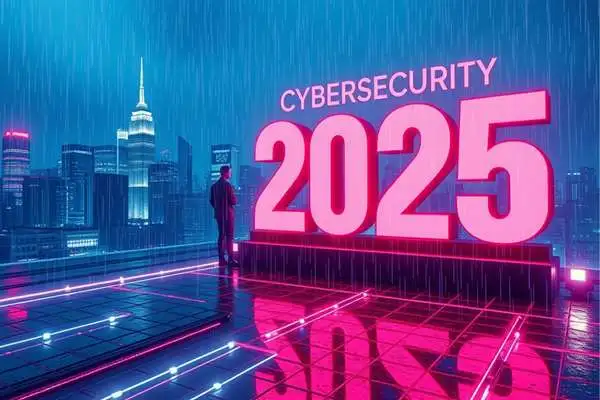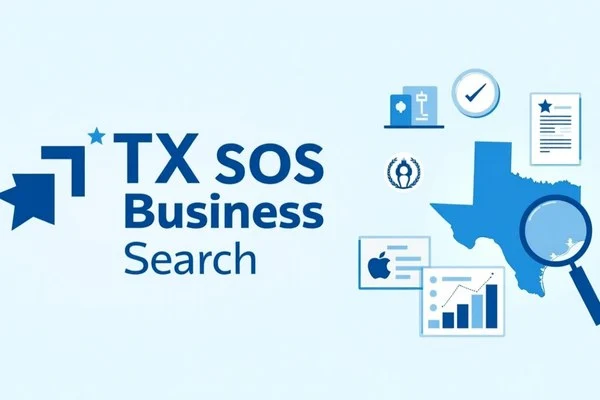E-commerce has revolutionized how consumers shop, offering convenience, variety, and competitive pricing. As technology advances, e-commerce is poised for further growth and innovation. This article delves into the future of e-commerce, examining the trends and technologies that will shape the industry in the coming years.
The Current State of E-Commerce
Before we explore the future, it’s essential to understand the current state of e-commerce. According to recent statistics, global e-commerce sales reached approximately $4.28 trillion in 2020 and are projected to grow to over $6.38 trillion by 2024. The COVID-19 pandemic accelerated this growth as consumers turned to online shopping for safety and convenience. As of 2023, e-commerce sales are estimated to have surpassed $5.5 trillion, reflecting a significant increase in online shopping habits (Statista).
Key players in the e-commerce space include giants like Amazon, Alibaba, and eBay, but the market is also filled with niche retailers and direct-to-consumer brands. The rise of mobile shopping, social media influence, and advancements in payment technologies have all contributed to the rapid expansion of e-commerce.
Key Trends Shaping the Future of E-Commerce
- Rise of Mobile Commerce
Mobile commerce, or m-commerce, is set to dominate the e-commerce landscape. With the increasing use of smartphones and tablets, consumers are more inclined to shop on mobile devices. According to Statista, mobile commerce accounted for 72.9% of total e-commerce sales in 2021, which is expected to continue. By 2025, mobile commerce will account for over 80% of all e-commerce sales (Statista).
To capitalize on this trend, businesses must optimize their websites for mobile devices, ensuring a seamless shopping experience. Mobile apps, push notifications, and payment options will enhance customer engagement and drive sales.
Example: Retailers like Walmart and Target have developed user-friendly mobile apps that allow customers to browse products, check inventory, and make purchases with just a few taps. These apps often include features like personalized recommendations based on browsing history, making the shopping experience more engaging.
- Personalization and Customer Experience
Personalization is no longer a luxury; it’s a necessity. Issuers expect tailored experiences that cater to their preferences and behaviors. E-commerce businesses can leverage data analytics and artificial intelligence to deliver personalized product recommendations, targeted marketing campaigns, and customized shopping experiences.
By analyzing customer data, businesses can understand purchasing patterns and preferences, allowing them to create more relevant and engaging interactions. This level of personalization not only enhances customer satisfaction but also fosters brand loyalty.
Case Study: Amazon is a prime example of a company that excels in personalization. Its recommendation engine analyzes user behavior and suggests products based on past purchases and browsing history. This approach has significantly contributed to Amazon’s sales, and Amazon’s recommendations often lead to increased conversion rates.
- Social Commerce
Social media platforms are increasingly becoming shopping destinations. Social commerce refers to integrating e-commerce with social media, allowing users to discover and purchase products directly through platforms like Instagram, Facebook, and TikTok.
Social commerce offers businesses unique opportunities to reach and engage their target audience with features like shoppable posts, live shopping events, and influencer partnerships. As social media continues to evolve, we can expect further innovations that blur the lines between social interaction and shopping.
Trend Insight: According to a report by eMarketer, social commerce sales in the U.S. are expected to reach $36.09 billion by 2021, accounting for 4.3% of total e-commerce sales. This growth highlights the importance of integrating social media strategies into e-commerce plans (eMarketer).
- Subscription-Based Models
Subscription-based e-commerce models have gained popularity recently, offering consumers convenience and value. From meal kits to beauty products, subscription services provide curated experiences that cater to specific interests.
This model generates recurring revenue for businesses and fosters customer loyalty. As consumers seek convenience and personalized experiences, subscription-based models will likely become a staple in the e-commerce landscape.
Example: Dollar Shave Club and Birchbox have used subscription models to challenge traditional retail. By providing personalized products regularly, they’ve built strong customer bases and fostered brand loyalty.
- Sustainability and Ethical Shopping
As consumers become more environmentally conscious, sustainability is emerging as a critical factor in purchasing decisions. E-commerce businesses prioritize sustainability and ethical practices that resonate with consumers who value transparency and social responsibility.
From eco-friendly packaging to sustainable sourcing, businesses can differentiate themselves by adopting practices that align with consumer values. This trend is not just a fad; it represents a fundamental shift in consumer behavior that will shape the future of e-commerce.
Insight: A survey by Nielsen found that 73% of millennials are willing to pay more for sustainable products. This statistic underscores the importance of integrating sustainability into e-commerce strategies to attract and retain customers (Nielsen).
Innovations Driving E-Commerce Forward
1. Artificial Intelligence and Machine Learning
Artificial intelligence (AI) and machine learning (ML) are revolutionizing- commerce by enabling businesses to analyze the latest data and make informed decisions. AI-powered chatbots enhance customer service by providing instant support, while ML algorithms optimize inventory management and pricing strategies.
Additionally, AI can enhance personalization experiences by analyzing customer behavior and preferences, allowing businesses to deliver targeted recommendations and marketing messages.
Example: Companies like Shopify are integrating AI tools that help merchants analyze customer data and predict trends, enabling them to make data-driven decisions that enhance their e-commerce strategies.
2. Augmented Reality and Virtual Reality
Augmented reality (AR) and virtual reality (VR) transform the online shopping experience by allowing consumers to visualize products in their environment. For example, furniture retailers can use AR to let customers see how a piece of furniture would look in their home before purchasing it.
This immersive experience enhances customer engagement and reduces the likelihood of returns, as consumers understand what they buy more clearly.
Case Study: IKEA’s Sacee allows users to visualize how furniture will fit in their homes. This innovative approach has improved customer satisfaction and return rates, showcasing the potential of AR in e-commerce.
3. Voice Commerce
With the rise of smart speakers and voice assistants, voice commerce is becoming increasingly popular for consumers to shop. Voice-activated shopping lets users purchase simple voice commands, providing a convenient, hands-free shopping experience.
As voice recognition technology continues to improve, businesses must optimize their e-commerce platforms for voice search and consider integrating voice commerce into their overall strategy.
Insight: According to a report by OC&C Strategy Consultants, voice shopping is expected to reach $40 billion by 2022 in the U.S. alone. This growth highlights the need for businesses to adapt their marketing strategies to accommodate voice search.
4. Blockchain Technology
Blockchain technology offers a secure and transparent way to conduct transactions, making it an attractive option for e-commerce businesses. Using blockchain, companies can enhance supply chain transparency, reduce fraud, and improve payment security.
Additionally, blockchain can facilitate smart contracts, automate transactions, and ensure that terms are met before payment is released. This technology has the potential to streamline operations and build trust between businesses and consumers.
Example: Walmart has implemented blockchain technology to track the provenance of food products, allowing them to identify sources of contamination and improve food safety. This application of blockchain not only enhances transparency but also builds consumer trust.
Challenges Facing E-Commerce
While the future of e-commerce is promising, several challenges must be addressed:
1. Global Supply Chain Issues
The COVID-19 pandemic has exposed vulnerabilities in global supply chains, leading to delays and shortages impacting e-commerce businesses. Companies must develop strategies to mitigate disruptions and ensure timely delivery as consumer demand fluctuates.
Insight: Businesses are increasingly looking to diversify their supply chains, sourcing products from multiple suppliers and regions to reduce dependency on a single source. This approach can help mitigate risks associated with global events and improve resilience.
2. Data Privacy and Security
As e-commerce grows, so do concerns about data privacy and security. Consumers are increasingly aware of how their data is collected and used, leading to heightened expectations for transparency and protection.
E-commerce businesses must invest in robust security measures to protect customer data and comply with regulations such as the General Data Protection Regulation (GDPR) and the California Consumer Privacy Act (CCPA). Failure to do so can result in significant legal and reputational consequences.
6. Predictions for the Future of E-Commerce
As we look to the future, several predictions can be made about the evolution of e-commerce:
- Increased Integration of AI
AI will play an even more significant role in e-commerce, driving personalization, automating processes, and enhancing customer service.
- Expansion of Social Commerce
Social media platforms will continue to evolve as shopping destinations, and more businesses will leverage social commerce to reach consumers.
- Growth of Omnichannel Retailing
The lines between online and offline shopping will blur as businesses adopt omnichannel strategies, providing consumers with a seamless shopping experience across multiple touchpoints.
- Focus on Sustainability
As consumers prioritize sustainability, e-commerce businesses increasingly adopt eco-friendly practices and transparent supply chains.
- Emergence of New Payment Solutions
The future of e-commerce will see the rise of innovative payment solutions, including cryptocurrencies and digital wallets, which will provide consumers with more options and convenience.
Conclusion:
The future of e-commerce is bright and filled with opportunities for innovation and growth. As technology advances and consumer behaviors evolve, businesses must stay agile and adapt to the changing landscape. By embracing emerging trends, leveraging innovative technologies, and prioritizing experience, e-commerce businesses can thrive in this dynamic environment.
As we progress, the key to success will be understanding and anticipating consumers remaining committed to sustainability and ethical practices. The e-commerce landscape is set to transform, and those prepared to embrace change will shape the future of retail.
FAQs:
Q1: What is the most significant trend in e-commerce right now?
One of the significant shifts in e-commerce is the growing popularity of mobile commerce (m-commerce), as more and more people are using their smartphones and tablets to shop. Along with this, there’s a stronger focus on personalizing the shopping experience for consumers.
Q2: How can businesses improve their e-commerce customer experience?
Businesses can enhance their e-commerce customer experience by using data analytics, optimizing websites for mobile devices, offering various payment options, and ensuring top-notch customer service through chatbots and support teams.
Q3: What role does social media play in the future of e-commerce?
Social media plays a crucial role in the future of e-commerce by serving as a platform for social commerce, where users can discover and purchase products directly through social media channels. Influencer marketing and shoppable posts are key components of this trend.
Q4: How important is sustainability in e-commerce?
Sustainability is becoming increasingly important in e-commerce as consumers prioritize eco-friendly practices and products. Businesses that adopt sustainable practices can attract environmentally conscious consumers and differentiate themselves in a competitive market.
Q5: What technologies are shaping the future of e-commerce?
Technologies such as artificial intelligence, augmented reality, voice commerce, and blockchain are shaping the future of e-commerce. These innovations enhance personalization, improve customer engagement, and streamline operations.









